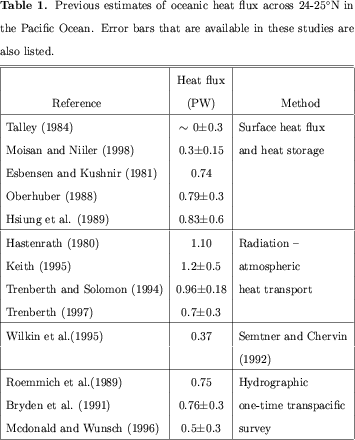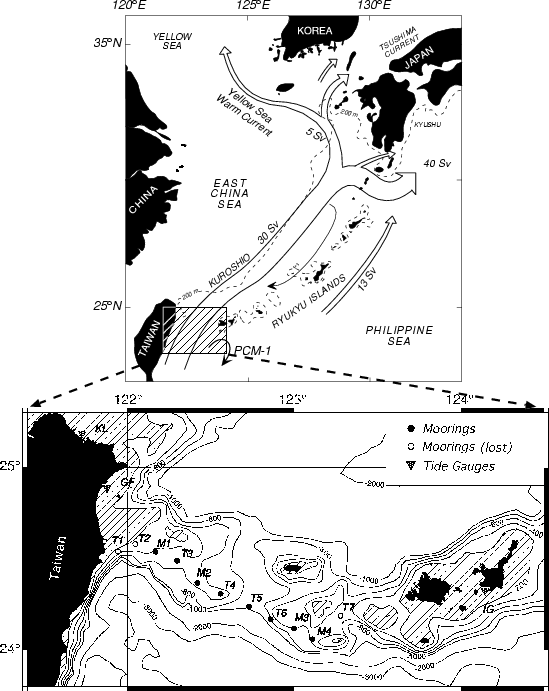Introduction
|
Heat transport by ocean currents plays an important role in determining the rate
of global climate change and regional climate patterns.
|
 |
Both indirect and direct
methods have been used to estimate the oceanic heat flux through zonal sections
using observational data. The available mean trans-Pacific heat flux estimates
using either direct or indirect methods at 24°N are summarized in
Table 1, which shows a rather large range of values.
|
The so-called direct methods involve calculation of the meridional heat flux
integral from trans-oceanic zonal hydrographic data coupled with current
measurements near the boundaries. Mainly based on hydrographic section data,
historical estimates of the mean Kuroshio transport ranges from 20 to 33 Sv.
Since the oceanic state measured by a single hydrographic section can be
aliased by eddies and seasonal and interannual variability, especially near
the western boundary where the variability is most energetic, the uncertainty
of the Kuroshio volume and temperature transport may thus lead to significant
errors in presently available trans-Pacific heat flux estimates.
|
Here we make a new estimate of the annual mean meridional ocean heat transport
across 24°N in the Pacific and its seasonal variation using the WOCE
PCM-1 array data (Fig.1), various wind data sets, and an improved interior
hydrographic climatology.
|

|
The main purpose of this study is to use the new PCM-1
Kuroshio transport measurements to constrain the 24°N Pacific
meridional heat transport estimate.
|
A second purpose is to compare the observed
heat flux estimate to model simulations and to improve our understanding of the
associated heat transport mechanisms.
|








